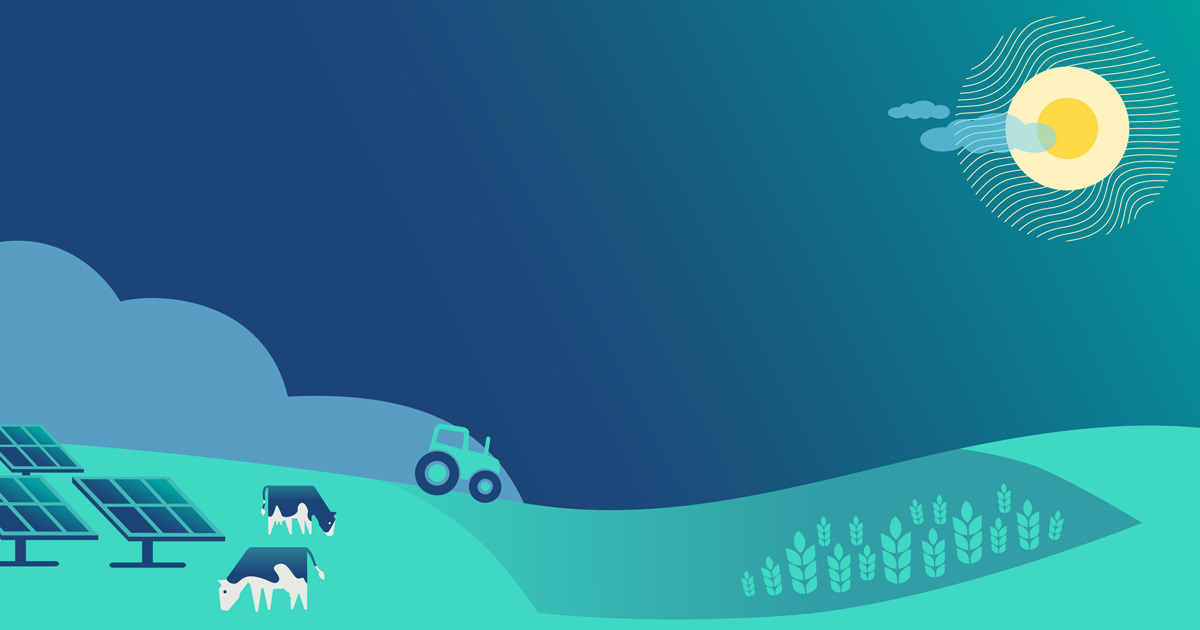Early Planting Strategies May Not Align with Current Spring Wheat Growth Patterns – Bioengineer.org

Report on Climate Adaptation in U.S. Spring Wheat Production and Implications for Sustainable Development Goals
Executive Summary
A recent study from Washington State University evaluates the efficacy of earlier planting as a climate adaptation strategy for U.S. spring wheat. The research concludes that this singular approach is insufficient to mitigate the adverse effects of rising temperatures, thereby posing significant risks to food security and agricultural sustainability. These findings have direct implications for several Sustainable Development Goals (SDGs), particularly SDG 2 (Zero Hunger), SDG 13 (Climate Action), and SDG 1 (No Poverty), by highlighting the need for more complex, integrated solutions to build resilient food systems.
Key Findings: Challenges to SDG 2 (Zero Hunger)
The study’s core findings challenge the assumption that advancing planting dates can safeguard crop yields. This directly threatens the objectives of SDG 2, which aims to end hunger and ensure sustainable food production.
- Failure to Replicate Favorable Conditions: Earlier sowing does not reproduce the historical growing conditions necessary to maintain current spring wheat productivity levels under future climate scenarios.
- Increased Temperature Stress: Contrary to expectations, early-planted crops are exposed to a wider range of suboptimal temperatures, including cold snaps and heat stress during critical, non-summer growth phases. This impairs physiological development and reduces grain yields.
- Insufficient Yield Protection: The strategy of avoiding peak summer heat is offset by new thermal stresses at other developmental stages, making it an inadequate measure to ensure stable food production.
Implications for SDG 13 (Climate Action)
The research underscores the complexity of agricultural adaptation required under SDG 13, cautioning against oversimplified climate action strategies.
- Critique of Singular Adaptation Measures: The study demonstrates that isolated phenological adjustments are not a panacea for climate change impacts, calling for a recalibration of adaptation paradigms in agriculture.
- Necessity for Region-Specific Strategies: Findings were consistent across most northern U.S. wheat-growing regions, with the exception of the Pacific Northwest. This highlights the critical need for localized, data-driven climate action plans rather than one-size-fits-all solutions.
- Emphasis on Integrated Approaches: Effective climate action in agriculture must integrate genetic improvements, advanced agronomic practices, and comprehensive risk assessments to build true resilience.
Socio-Economic Dimensions: Links to SDG 1 (No Poverty) and SDG 8 (Decent Work and Economic Growth)
The study reveals significant socio-economic consequences of the proposed planting shift, impacting progress toward SDG 1 and SDG 8.
- Compressed Planting Window: Climate-driven earlier sowing is predicted to narrow the typical eleven-week planting window to as little as one to seven weeks.
- Logistical and Economic Pressures: This shortened timeframe creates logistical challenges, increasing pressure on labor and machinery availability. This can undermine the economic viability of farms, particularly for smallholders.
- Increased Vulnerability for Farmers: Resource-limited farmers may lack the capacity to adapt to compressed operational schedules, potentially exacerbating rural poverty (SDG 1) and threatening the stability of agricultural livelihoods (SDG 8).
Pathways Forward: Aligning with SDG 9 (Industry, Innovation, and Infrastructure) and SDG 12 (Responsible Consumption and Production)
The report advocates for a multifaceted strategy grounded in scientific innovation and sustainable practices to safeguard future food production.
- Genetic Innovation: A primary recommendation is to leverage innovation (SDG 9) by breeding new wheat varieties that can mature earlier without sacrificing yield potential, tailored to shifting thermal environments.
- Advanced Computational Modeling: The use of high-performance simulation tools in the study exemplifies the role of technology in developing resilient agricultural infrastructure and informing sustainable production methods (SDG 12).
- Holistic Farm Management: The research calls for a move beyond simple timing adjustments to a comprehensive system that integrates genetic resources with refined planting practices to ensure sustainable and responsible production.
Sustainable Development Goals (SDGs) Addressed in the Article
SDG 2: Zero Hunger
- The article’s core subject is the production of spring wheat, a staple food crop. It directly addresses the challenge of maintaining agricultural productivity (“sustain current yield levels”) and ensuring the stability of the food supply (“safeguard food security”) in the face of climate change.
SDG 13: Climate Action
- The entire study is framed as a response to climate change. It analyzes a specific climate adaptation strategy (“earlier planting”) for agriculture and discusses the need to strengthen resilience to climate-related hazards like “rising summer temperatures” and “temperature extremes.”
SDG 9: Industry, Innovation, and Infrastructure
- The research highlighted in the article relies heavily on scientific innovation and advanced technology, such as “sophisticated computational simulation tools” and “high-performance computational models.” It also calls for further innovation in “wheat breeding and cultivar development” to create more resilient agricultural systems.
SDG 10: Reduced Inequalities
- The article explicitly addresses the socio-economic dimensions of climate adaptation, noting that the negative consequences of narrowed planting windows could “disproportionately affect smallholder and resource-limited farmers.” It advocates for “equitable access to varieties suited for future conditions” to ensure a just transition.
Specific SDG Targets Identified
Targets under SDG 2 (Zero Hunger)
- Target 2.3: By 2030, double the agricultural productivity and incomes of small-scale food producers… The article connects to this by highlighting the risks faced by “smallholder and resource-limited farmers,” implying that successful adaptation strategies must support their productivity and viability.
- Target 2.4: By 2030, ensure sustainable food production systems and implement resilient agricultural practices that increase productivity and production… This is the central theme of the article, which evaluates the resilience of an agricultural practice (earlier planting) and calls for a “holistic approach” to develop “more resilient cropping systems” that can adapt to climate change.
- Target 2.a: Increase investment… in agricultural research and extension services, technology development and plant… gene banks… The article showcases the importance of investment in “agricultural research” (the WSU study itself), “technology development” (computational modeling), and “genetic improvement” through wheat breeding programs.
Targets under SDG 13 (Climate Action)
- Target 13.1: Strengthen resilience and adaptive capacity to climate-related hazards and natural disasters in all countries. The research directly assesses the “adaptive capacity” of the U.S. spring wheat production system to climate hazards like “harsher summer heat” and “temperature extremes,” finding that a simple adaptation strategy is insufficient.
Targets under SDG 9 (Industry, Innovation, and Infrastructure)
- Target 9.5: Enhance scientific research, upgrade the technological capabilities… The article is a product of enhanced “scientific research” and demonstrates the use of upgraded technological capabilities like “computational modeling” to address complex agricultural challenges. It advocates for continued research and “breeding innovation.”
Targets under SDG 10 (Reduced Inequalities)
- Target 10.3: Ensure equal opportunity and reduce inequalities of outcome… The article points to a potential inequality of outcome where logistical challenges from climate change disproportionately harm smallholder farmers. It calls for “ensuring equitable access” to solutions, which aligns with this target.
Indicators for Measurement
Indicators for SDG 2 (Zero Hunger)
- Crop Yield: The article repeatedly refers to “yield levels” and “productivity” as the primary measure of success for any adaptation strategy. A key finding is that earlier planting is “insufficient to uphold historical productivity levels.”
- Length of the Planting Window: The study identifies the “compression of the planting window” from eleven weeks to as little as one week as a critical negative outcome. Therefore, maintaining a viable planting window can be used as an indicator of agricultural system resilience.
Indicators for SDG 13 (Climate Action)
- Crop Resilience to Temperature Stress: The article implies this can be measured by assessing how well crops withstand “temperature extremes,” “cold snaps,” and “heat stress” during critical growth phases without significant yield loss. The resilience of Pacific Northwest wheat is noted as an example.
Indicators for SDG 9 (Industry, Innovation, and Infrastructure)
- Development of Climate-Resilient Crop Varieties: The call to breed “wheat varieties that can mature earlier in the season without sacrificing yield potential” suggests that the number and performance of new, climate-adapted genotypes would be a key indicator of progress.
Indicators for SDG 10 (Reduced Inequalities)
- Rate of Adoption of New Varieties by Smallholder Farmers: The article’s emphasis on “ensuring equitable access” implies that progress can be measured by tracking whether smallholder and resource-limited farmers are able to access and benefit from new, resilient wheat varieties and other adaptive technologies.
Summary Table of SDGs, Targets, and Indicators
| SDGs | Targets | Indicators |
|---|---|---|
| SDG 2: Zero Hunger |
|
|
| SDG 13: Climate Action |
|
|
| SDG 9: Industry, Innovation, and Infrastructure |
|
|
| SDG 10: Reduced Inequalities |
|
|
Source: bioengineer.org

What is Your Reaction?
 Like
0
Like
0
 Dislike
0
Dislike
0
 Love
0
Love
0
 Funny
0
Funny
0
 Angry
0
Angry
0
 Sad
0
Sad
0
 Wow
0
Wow
0














































.jpg.webp?itok=0ZsAnae9#)







:focal(1500,1000)/https://media.globalcitizen.org/a6/9a/a69a4720-d8a1-4715-b596-18738d03c05c/rotary_polio_hero_image.jpg?#)

/countries/sri-lanka/photo-credit---dmc-sri-lanka.tmb-1200v.jpg?sfvrsn=dc298bcc_1#)


















